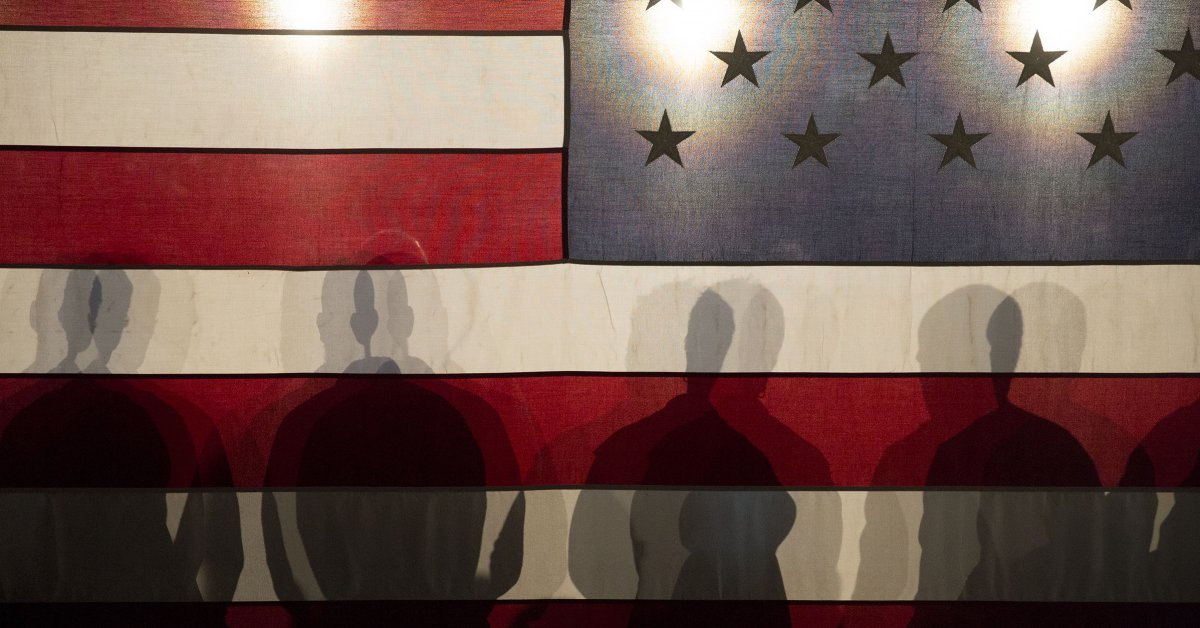Don’t Let the Loud Bigots Distract You. America’s Real Problem With Race Cuts Far Deeper
In a recent viral video, an unidentified white woman in line at a grocery store in Oregon, dressed in a floral romper and black knee-high boots, overheard a black woman’s phone conversation. She believed this black woman was trying to sell food stamps illegally. The exchange became heated, and the white woman was told, in no uncertain terms, to mind her business. “Oh, it is my business,” the white woman responded. “Because I pay my taxes.” She then said something that, quite frankly, stunned me: “We’re going to build this wall.”
This was not an oddly timed statement about her views on immigration; it was a declaration of her whiteness and, by extension, her view of who belonged in this country. She might as well have called the black woman a ******. She didn’t. She called the police instead.
But no, this wasn’t a video of police violence or another example of some white person hurling racial epithets. In so many ways, the argument between these two women captured the soft bigotry that has, from beneath the surface, enabled American public policy and individual behavior for decades. This woman, years after the departure of what Newt Gingrich called in 2011 “the most successful food-stamp President in American history,” saw a member of Mitt Romney’s “47% … who are dependent upon government … who pay no income tax.” This white woman witnessed Ronald Reagan’s welfare queen. Now she had not just a new phrase —
build this wall — but also the confidence that the President would support her in her indignation, and that the problem would soon be resolved. America would be great again.
It is this type of outburst, though — blaring and easy to denounce — that provides many Americans with a familiar experience: the moral comfort of having someone else to blame for our nation’s racial struggles. If only we, the non-racists, could kick her out, or lock her up.
It is relatively easy to blame our current struggles on these loud racists who have been emboldened by the election of Donald Trump. But this is typical American racial melodrama. We need easily marked villains and happy endings. Yet this recital of condemnation all too often hides the messiness of our own moral lives: that we aren’t absolved of our complicity simply by the politicians we support, especially since the American public so rarely pushes for policies that enact our supposed commitment to racial equality.
Our narrow focus on explicit racists misses a development that explains our current moment: that much of our struggle with race today is bound up in the false innocence of white suburban bliss and the manic effort to protect it, no matter the costs. In the late 1960s and early ’70s, for example, millions of white homeowners in the nation’s suburbs — for the most part, racially segregated communities subsidized by state policies — rejected efforts to desegregate schools through busing and vehemently defended the demographic makeup of their neighborhoods. These were not people shouting slurs at the top of their lungs (although some did). They were courageous defenders of their quality of life — segregated life, that is. These were the people of the so-called “silent majority,” who insisted on free-market meritocracy and embraced a color-blind ideology to maintain their racially exclusive enclaves. Their antibusing crusades, taxpayer revolts and insistence on neighborhood schools cut across party lines and helped shape national politics. Democrats and Republicans appealed to the interests of these voters, and many turned their backs on the agenda of the civil rights movement. These Americans, it was argued, were the true victims.
In his important 2006 book,
The Silent Majority: Suburban Politics in the Sunbelt South, historian Matthew D. Lassiter stated clearly the effect of this moment from the late 1960s and early ’70s:
The suburban politics of middle-class warfare charted a middle course between the open racism of the extreme right and the egalitarian agenda of the civil rights movement, based in an ethos of color-blind individualism that accepted the principle of equal opportunity under the law but refused to countenance affirmative-action policies designed to overcome metropolitan structures of inequality.
Suburban white America voiced its belief in racial equality, but relentlessly held on to white class privilege and all the policies and structures that made it possible. Many social scientists would call this the “new racism” or “laissez-faire racism,” in which white Americans failed to actively address racial inequality and, in doing so, maintained the racial status quo. Historians, like Lassiter, would identify it as a key feature of modern American conservatism.
This hateful moment offers an opportunity for Americans to finally change our racist ways

time.com
Dr. Carol Anderson summed it up like this
:
“The second key maneuver, which flowed naturally from the first, was to redefine racism itself. Confronted with civil rights headlines depicting unflattering portrayals of KKK rallies and jackbooted sheriffs, white authority transformed those damning images of white supremacy into the sole definition of racism. This simple but wickedly brilliant conceptual and linguistic shift served multiple purposes. First and foremost, it was conscience soothing. The whittling down of racism to sheet-wearing goons allowed a cloud of racial innocence to cover many whites who, although 'resentful of black progress' and determined to ensure that racial inequality remained untouched, could see and project themselves as the 'kind of upstanding white citizen(s)' who were 'positively outraged at the tactics of the Ku Klux Klan". The focus on the Klan also helped to designate racism as an individual aberration rather than something systemic, institutional and pervasive.”
―
Carol Anderson, White Rage: The Unspoken Truth of Our Racial Divide







:max_bytes(150000):strip_icc()/leaving-florida-2667542-5991eefcd088c00013b44195.jpg)